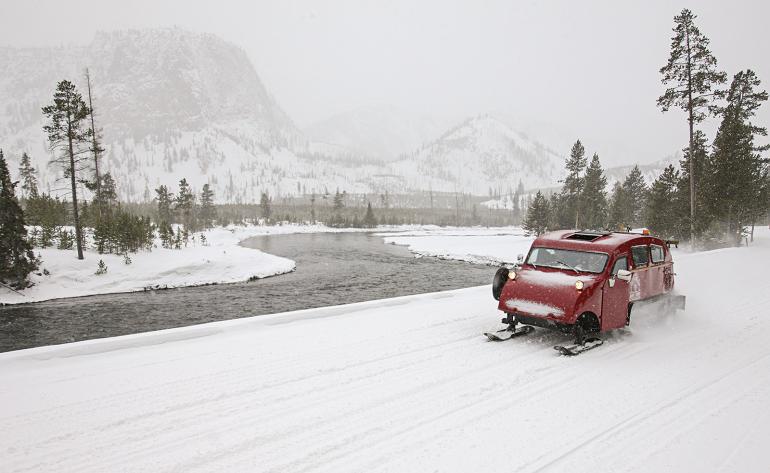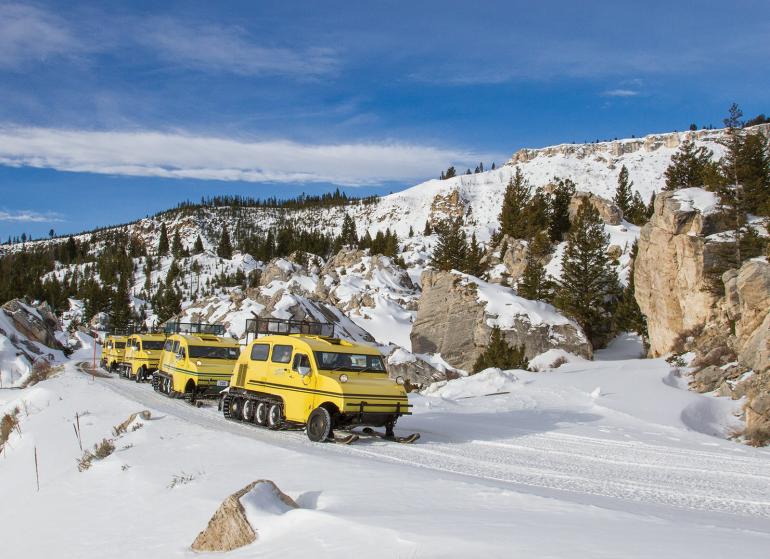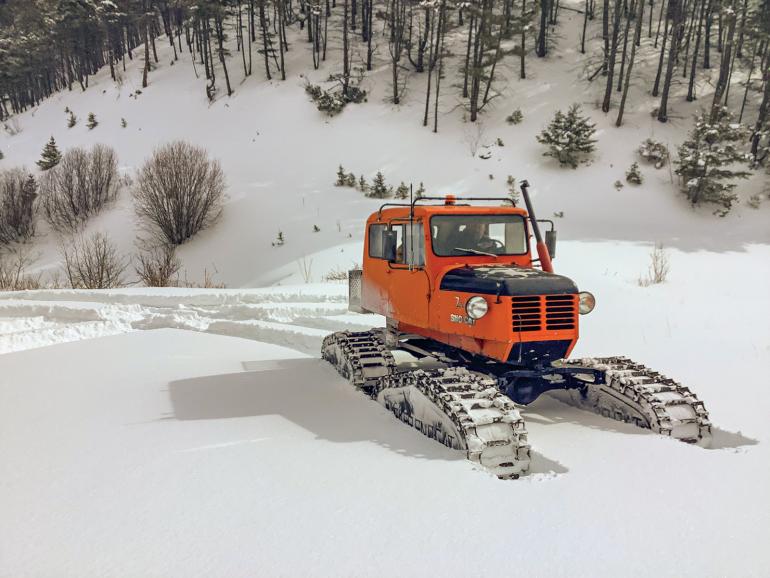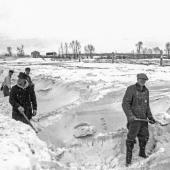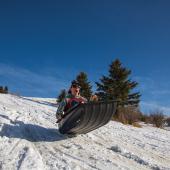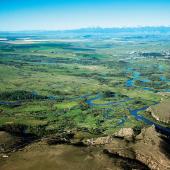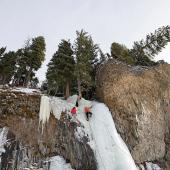Track Record
The history of snowcatting.
There was once a time in the mountain West when the only motorized sounds of winter came from a few gas-powered ski lifts and some scattered snowcats powering up mountaintops. Long before the whine of high-performance snowmobiles, before groomed ski runs, even, American- and Canadian-made snowcats prowled off-piste in the upper elevations.
As the Great Depression waned, demand rose for better wintertime access to a growing network of communication and utility infrastructure high in the mountains. Weather and agricultural interests also looked to more closely monitor mountain snowpack conditions.
Then, in the World War II era, commercial and government entities issued calls to supply effective motorized over-the-snow transport. Ag colleges and entrepreneurs throughout the West responded. In 1950, the U.S. Soil Conservation Service sponsored competitive snowcat trials in Sun Valley.
The golden era of snowcats extended into the mid-1970s when groomed ski runs became a mandatory feature of destination resorts, adding grooming to the list of established commercial and industrial snowcat duties.
By the mid-1950s, three centers would come to stand out—Tucker Sno-Cat Corp. (from “snow caterpillar”) out of Medford, Oregon; Bombardier out of Valcourt, Quebec; and a line of companies that began with prototype machines built at the Logan campus of today’s Utah State University—Thiokol, DMC, and LMC.
Bombardier built highly successful “snowcoaches” to carry passengers and cargo, which became iconic wintertime transportation in Yellowstone National Park. Bombardier would later develop models suited to high elevations and steep terrain.
For its part, Tucker built machines that ranged from the tiny two-seater “Kitten” to large workhorses powered by big Chrysler V-8s. Models would eventually feature four steel-tracked pontoons that could be steered front and rear. These hardy, highly mobile machines would transverse the Antarctic Continent in 1958. “No snow too deep, no road too steep” remains the Tucker Sno-Cat motto.
Thiokol, and its successor companies, also built machines of various sizes to address commercial and industrial needs of the day.
A distant fourth company, KRISTI out of Denver, developed models based on an aircraft fuselage design with lightweight fiberglass bodies. The name was derived from a familiar alpine skiing technique known as the “Christi.”
The golden era of snowcats extended into the mid-1970s when groomed ski runs became a mandatory feature of destination resorts, adding grooming to the list of established commercial and industrial snowcat duties. Nonetheless, by the year 2002, Thiokol-DMC-LMC had ceased production, Bombardier pivoted toward recreational snowmobiles and aircraft manufacturing, and KRISTI was long gone.
Tucker today remains the last North American snowcat manufacturer.
Recently, enthusiasts of these retired snowcats are beginning to coalesce in southwest Montana.
Mark Taylor, a pilot and owner of Rocky Mountain Rotors Helicopter out of Manhattan, got the snowcat bug in his college days in eastern Washington. He owns a mid-size 1977 Thiokol and a couple of mountain Bombardiers from the early 1980s.
Taylor talks about how helicopters took away much of the work that snowcats used to perform for utilities and communications companies. Although expensive to operate, helicopters “can whisk three or four people up and down a mountain in no time,” he says.
Despite a long history in Montana’s mountains, the snowcat is something of an administrative unicorn for public-land managers—neither snowmobile nor tracked ATV, sometimes large, but oftentimes small.
He also points out that anyone with rudimentary mechanical skills can approach these retired snowcats, which typically feature Detroit-steel carbureted motors and basic drivetrains. Track work and body fabrication is ordinarily easy enough to learn, he says.
Bart Thompson is a retired communications and railroad worker and small businessman from Helena who acquired fabrication and mechanical skills over the years. Several years ago, Thompson successfully bid on a small 1973 Thiokol “Imp.” He likes the wide-track unit because “it goes virtually anywhere and doesn’t break down.”
The father-son team of Dale and Ray Smail out of Alder operate enviable antique pontoon-track Tuckers. Ray’s family had a Tucker Kitten when he was young, and he always remembered the fun the family had with it. Eventually Ray picked up a smaller Tucker, and his son Dale followed up with a midsize unit a few years later. Their family regularly joins friend Jim Kleis from the Virginia City area who runs an old Thiokol.
I purchased a 1963 KRISTI that had sat idle outdoors for more than ten years. Tiny compared to the Smails’ Tuckers, the unit is powered by an air-cooled VW motor. It was purchased new and operated for years by Mountain Bell Telephone out of Missoula.
Despite a long history in Montana’s mountains, the snowcat is something of an administrative unicorn for public-land managers—neither snowmobile nor tracked ATV, sometimes large, but oftentimes small. Many members of this loose affiliation use their cats mostly to access upper elevation cabins in winter. Group outings typically traverse established snowed-over roads outside of the groomed snowmobile networks. These outings bring the snowcat community together to tell stories, talk about the machines, and reminisce on what it must’ve been like when there were few other options for mountain travel in the West.

